An Odyssey in the Philippines
Me, Love and Other Catastrophes
Fresh from a break-up, Marco Buch sets out on an emotional rollercoaster ride in the Philippines, meeting dancing killers and tattooed girls, and experimenting with Tinder.
When an endangered animal becomes a threat: Marianna Hillmer journeys through the mangrove forests of Bangladesh.
We have to run the last kilometre, carrying our bags. Our vehicle, an inventive Bangladeshi concoction cobbled together from a motorbike and a loading bed, gets stuck. The makeshift road is in a miserable condition: the brick paving is broken and we’re constantly stumbling across giant holes.
It’s moments like these when I hear the gloating voices of other travellers in my head: ‘You know, if you were using a rucksack you wouldn’t have to lug your little trolley awkwardly over every lump and bump.’ Not letting my anger at my self-induced fate show, inwardly I transfer it instead onto my various male companions, who, I feel, could really do the gentlemanly thing and carry it for me.
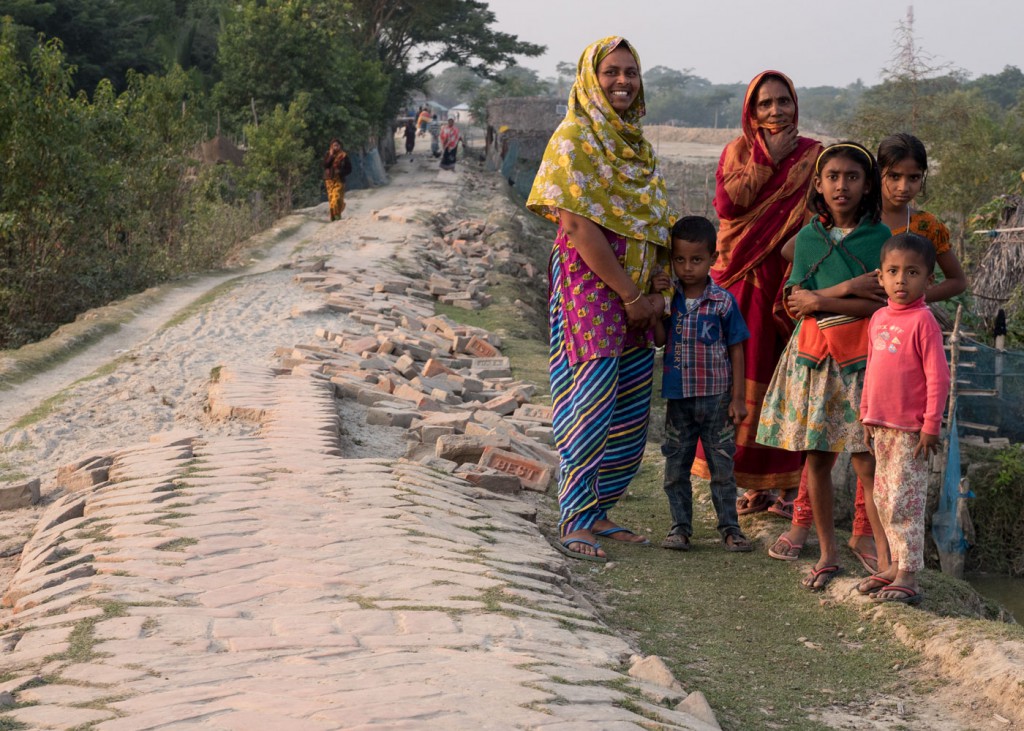
After a sweat-drenched eternity, Bobby finally tells us we’re here. We’re standing in front of a blue wooden house with colourful windows, a cross on the roof, surrounded by palm trees, banana trees and some kind of plant that, thanks to my lack of botanical expertise, I can’t identify. It belongs to his aunt, who has lived here her whole life. Behind it there’s another small mud hut.
We got to know Bobby a few days ago in Khulna, the third-largest city in Bangladesh, as a troop of happy children accompanied us through the streets.
Tourists are rare in Khulna – and extremely rare in Bangladesh.
Bobby is Bangladeshi, and a couchsurfer. ‘There aren’t many things about Bangladesh that I’m proud of,’ he tells us. ‘I know there are many problems here, and that Bangladesh is very poor. But Bangladeshi hospitality? That I’m incredibly proud of. We really mean it – it comes from the heart and is an important part of our culture. It doesn’t matter how well-off a family is.’
He has made it his mission to help tourists wanting to experience real life in Bangladesh learn about Bangladeshi hospitality, inviting us to stay with his family in the blue house for three days, in a small village on the edge of the Sundarbans.
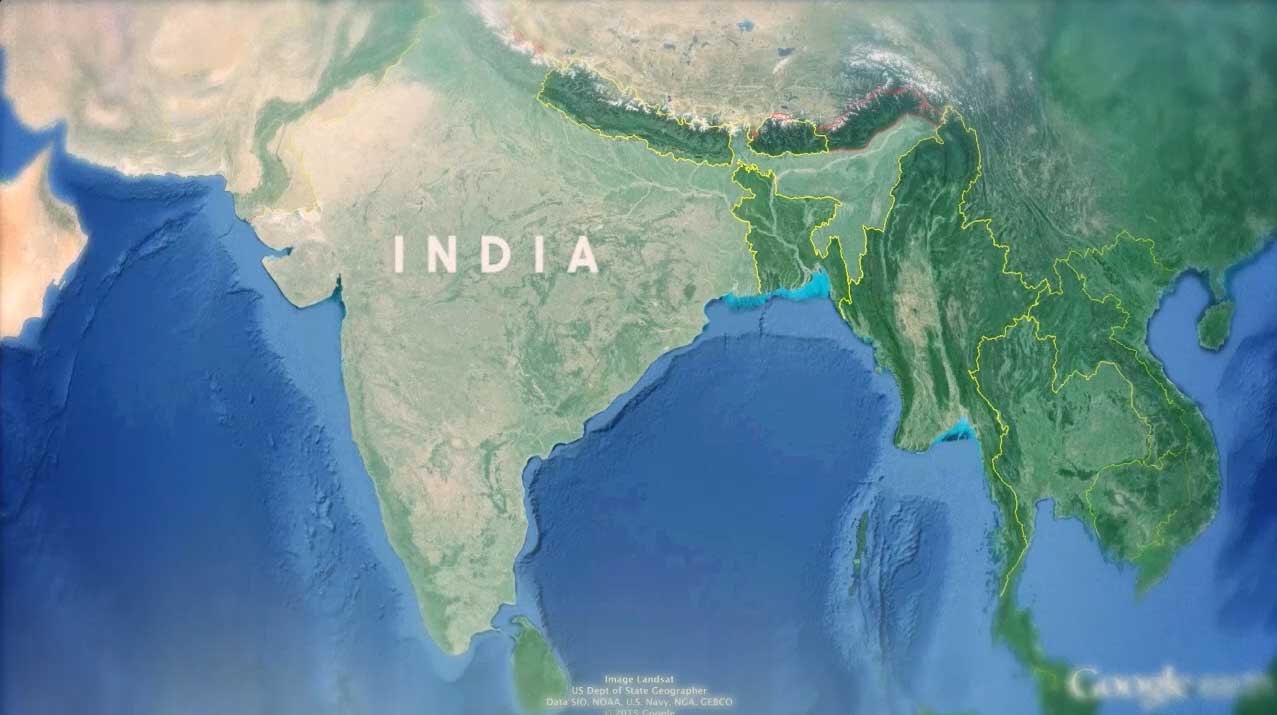
Bangladesh is a small, over-populated country in South Asia, and remains mostly in the shadow of its enormous and culturally related neighbour India. Bangladesh is almost completely encircled by India, bordered only to the South East by Myanmar.
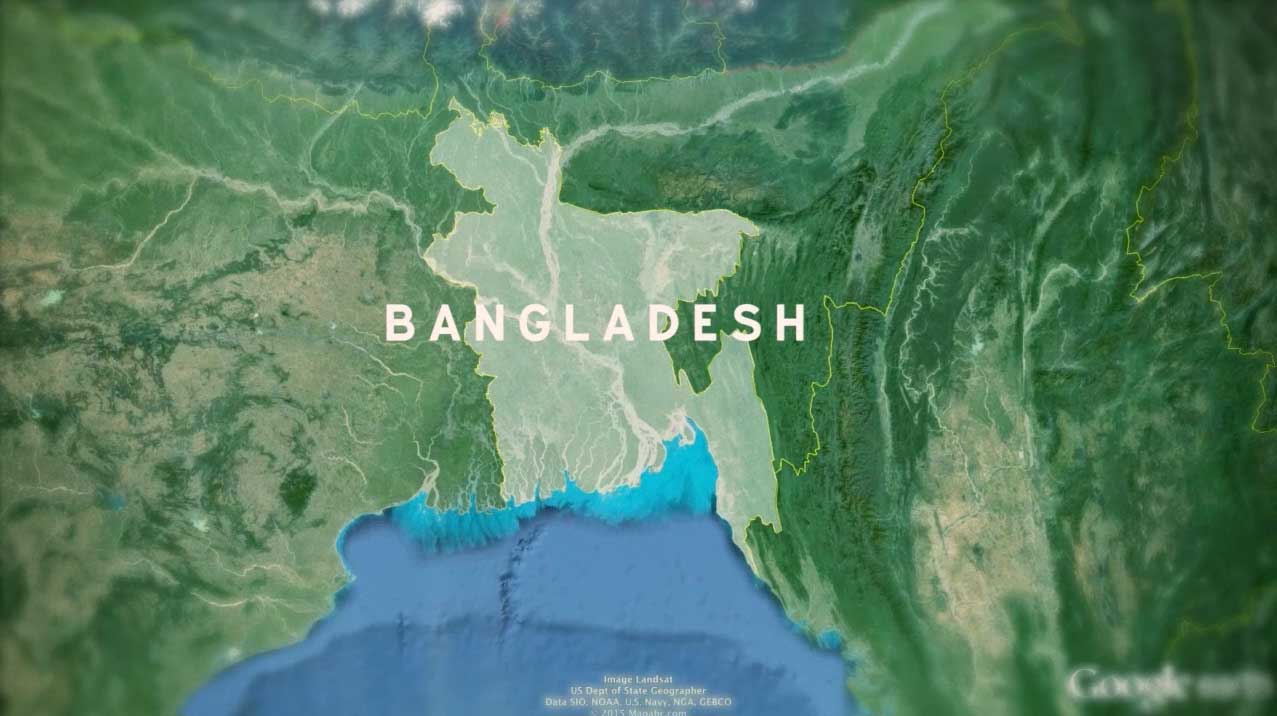
In 1947, when the Indian subcontinent became independent of British colonial rule, it was annexed to Pakistan under the name ‘East Pakistan’, due to its Muslim majority. Its significant geographic and cultural differences from Pakistan led to independence in 1971, after a bloody war, and to its current name of Bangladesh.
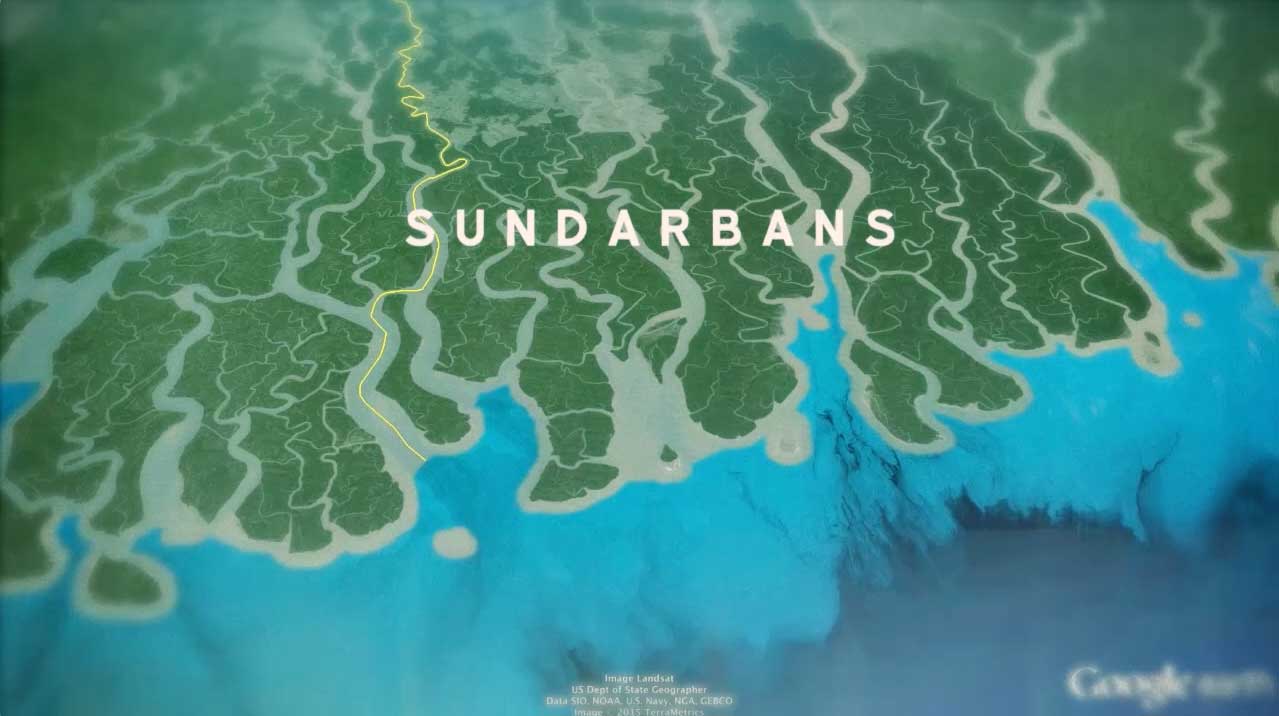
In the South West are the Sundarbans, a vast delta, and home of the largest mangrove forests on earth. About 6,000 square kilometres of it are in Bangladesh and 4,000 in India.
‘It’s wonderful here – no cars, no noise. My family lives very simply. It’s a completely different standard here in the village. When I came to visit as a child, I got homesick immediately and wanted to go back home to the city, where we had electricity. I cried in the evenings. These days I don’t mind. I like coming here, and I enjoy the silence,’ says Bobby.
He kisses his aunt’s feet as a greeting.
Shyly, we mumble various greetings, bowing and laying our right hands on our chests, as our mouths cramp from constantly smiling. All in the hope that some of it accords with the local customs of a Christian Bangladeshi family, and that we are clearly expressing our gratitude at being permitted to stay. I can’t remember all the names and relations between the different members of the increasingly large family. In the end there are twenty large and small faces beaming at us.
I’m relieved when we’re back on our way again, heading for the bazaar. Trying to communicate with so many people when you don’t have a common language is very taxing. My head is threatening to explode.
We’re enveloped in the sounds of nature. Leaves rustle in the wind, birds twitter, and goats and roosters compete to see who’s got the most powerful set of lungs. It’s unusual – normally the streets of Bangladesh are awash with a perpetual chorus of car horns. Not in this village. Most of the houses are made of mud, with straw roofs. The countryside is a multitude of different shades of green, as women wade through the water with nets. Waterways or large, square ponds surround the simple houses.
A vast river to our left separates us from the Sundarbans, the largest mangrove forest in the world, and home to the endangered Bengal tiger.
In the Sundarbans, tigers are known as man-eaters. They say that human blood keeps them going longer than flesh.
On the other side of the river a tiger is prowling through the reeds! I’m exhilarated by the sight. I’m all too keen to see this majestic creature in the wild.
The tiger is the national animal of Bangladesh. It represents unconquerable strength and is therefore used as a decorative motif on lorries and trucks, whose dominance in the Bangladeshi traffic is as uncontested as that of the tiger in the jungle.
The Bengal tiger is native to the Indian subcontinent, and is also to be found in Nepal and Bhutan. The tigers that live in the Sundarbans, however, have a unique selling point: they bear the notorious soubriquet of ‘man-eater’ (which the lorries in Bangladesh have more than earned for themselves, too). Each year around thirty people and seventy domestic animals are killed by tigers.
It’s unclear why the tigers in the Sundarbans are so unusually aggressive. In the village, however, they say that tigers drink human blood, which keeps them going significantly longer than flesh.
At a restaurant in the bazaar that evening, it’s not long before we get to talking with a young Bangladeshi man whose older brother was killed five years ago by a tiger.
He was twenty-one years old when he went crab-fishing in the Sundarbans, never to return. At first the family were afraid that he had fallen into the hands of pirates, who mainly content themselves with smuggling weapons through the mangrove forest, but now and again mug fishermen and woodcutters.
He’d been married five months before he died. In the patriarchal society of Bangladesh, the woman traditionally moves in with the man’s family after the wedding. An unmarried or widowed and childless woman is a burden on them, as she can’t bring any children into the world. Children mean security for their livelihood and will care for them in their old age. The young widow was lucky, however, and was married again with help from the family.
What sounds to us like a kind of callous deportation is actually a willingness to help, enabling the woman to live a full life after her loss. If she’d remained a childless widow her whole life, she would have been stigmatised by society.
The young Bangladeshi from the bazaar has opened a shop there, to support himself and his parents. But the business isn’t always enough. The family still has to go fishing in the Sundarbans. ‘Yes, we’re afraid. But we’ve got no other choice, if we want to survive,’ says the man as he leaves.
We remain sitting in the small restaurant, sipping our tea. I stare absently into the fire in the hand-built mud hearth, where there’s an enormous steel pan of bubbling fat. This is the restaurant’s kitchen. These fireplaces are almost always outside, and in the evenings they use them to deep-fry bread with different fillings. My usually boundless appetite for novelty has suddenly deserted me. The young man’s story, or perhaps the hygiene level of the restaurant, is to blame.
Probably both.
My ardent desire to see a tiger in the wild has now become a little embarrassing. The sight we tourists would pay good money for is one that people who live near the Sundarbans are desperate to avoid.
The whole situation brings home to me once more how privileged I am. Thanks to the happy accident of being born in a prosperous country, I’m able to want to see a tiger in the wild – before the endangered creature no longer exists. I’d have the security of an armed ranger, who would intervene in an emergency.
The circumstances here show me that tigers pose, above all, a threat to human beings. Back home, I live in a world of possibilities too utterly different to be able to really understand what it means when a tiger kills a Bangladeshi family’s only cow. It is as if we suddenly lost our house and all our belongings, including any insurance. Our means of existence would be destroyed.
The villagers naturally have a very different attitude than we do to the threat posed by tigers to their lives and existence. Revenge killings are not uncommon. They are a very real threat to the future of the Bengal tigers. Two to four tigers are killed every year in the villages around the Sundarbans. But who cares about the survival of an endangered species when their own life is in danger?
At the bazaar we meet an elderly man who survived a tiger attack twenty-two years ago.
Today, Bengal tiger skins fetch 20,000 to 25,000 Bangladeshi taka. That’s only 240 to 300 euros when you’re at the beginning of the multi-link sales chain, which can stretch from Bangladesh across India to Nepal, and eventually to China. The ultimate buyer will pay much more, of course, and the various middlemen make a fortune. There’s great demand for them.
In a country where the average wage is barely 70 euros per month, and where many families in rural areas survive on less than 30 euros per month, 300 euros is a hell of a lot of money.
And suddenly the opportunity arises to earn ten times the family’s total income.
A tempting deal.
Wildteam, an NGO based in Bangladesh, are trying to work against this dilemma, beginning a ten-year campaign in 2009 called the ‘Mother Sundarbans Project’, which takes a holistic approach to solving the conflict between humans and tigers in the Sundarbans. Their goal is to enable peaceful co-existence, where fewer people and livestock are killed by tigers.
The campaign is based on three pillars: educating people and raising awareness in the villages; sending out teams on patrol; and enforcing the laws against poaching.
Over 350 qualified volunteers help long-term with the education and awareness work among the villagers. Many of the inhabitants who go into the forest to work are not aware of the preventative security measures they could take. There are monthly meetings for security training, where they are taught to recognise fresh tiger tracks and warning calls from other animals, and advised never to go into the forest alone, but always as part of a team. The harsher legislation against poaching is also clearly explained, so that it will be widely understood. Anybody breaking the new laws risks a seven-year jail sentence and a fine of 1,000,000 taka (12,000 euros).
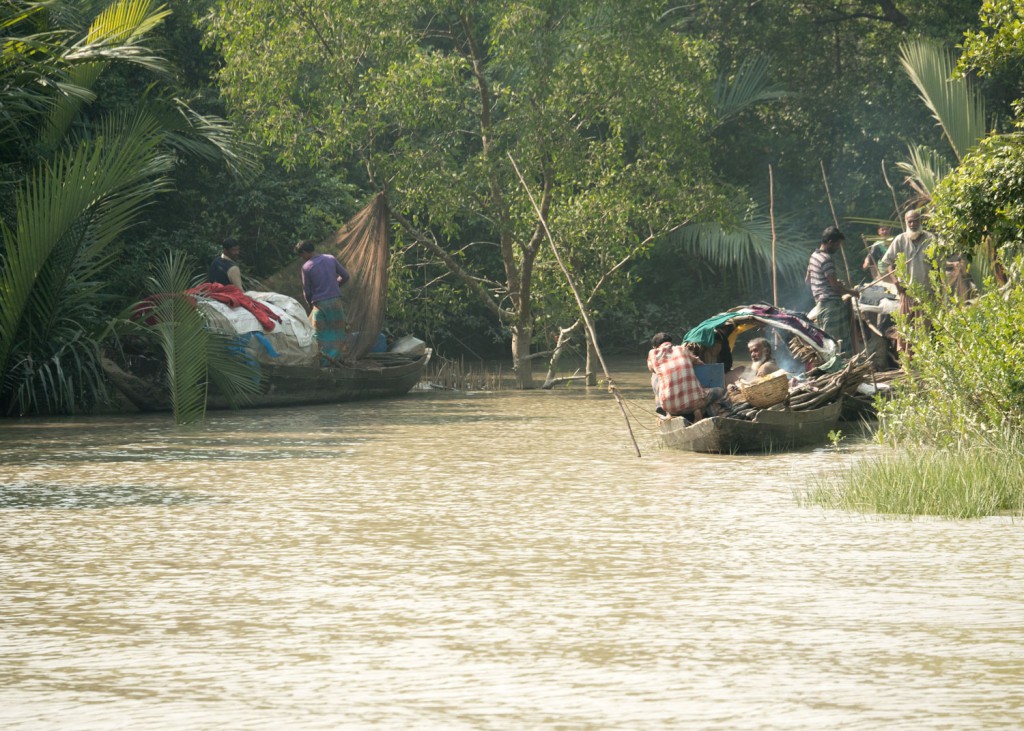
There are also numerous teams that patrol the mangrove forest around the clock. In emergency situations, for instance if a tiger comes into the village, they chase it back into the forest.
The campaign has been well received among the locals. The name ‘Mother Sundarbans’ was chosen for a good reason: the Sundarbans are an important source of sustenance for the surrounding villages, where approximately a million people live. Directly or indirectly, they all live off the ecosystem of the forest; the Sundarbans provide an income, whether through catching fish, prawns or crabs, or through gathering wood or honey. If the tigers die out, the ecosystem of the Sundarbans would collapse – its preservation is therefore crucial to all the villagers.
Searching for the Bengal tiger: a boat trip into the largest mangrove forest in the world.
The alarm goes off, much too early. Exhausted, we trudge wordlessly the good kilometre to the bazaar to perform the daily ritual of breakfast before we set off into the Sundarbans in a small boat. At least, that’s the plan.
The bazaar is practically deserted this morning; last night it was still the place to be. It’s as if the village were lying in bed with a hangover, which can’t be the reason, as alcohol is taboo in Muslim Bangladesh.
The word ‘bazaar’ makes you think of a confusing warren of narrow alleyways. This bazaar consists of a ramrod-straight road. The shops are constructed from the essentials. Wooden beams as support columns, tarpaulins as roofs. The most secure buildings are made of corrugated iron. Reinforced concrete is used only for official things like the school, the mosque and the bridge. The boats by the riverbank are exclusively made of wood.
Our breakfast place commences operations. As usual, I order parathas (deep-fried bread) with spicy dhal (lentil soup) and a chilli omelette. The simple reason I can decide so easily is because, after a week in Bangladesh, I’ve learnt that there’s no other option. And to follow, there’s a colonial holdover with a Bangladeshi finish: black tea. With a glass of tea comes a half-glass of sugar and a half-glass of condensed milk.
Slowly the sun reaches above the blanket of clouds and tinges everything with the soft light of dawn. The first boats glide soundlessly along the river.
Only our boat remains out of sight. No – there it is. Bobby points to a tiny dot on the horizon. In a few minutes they’ll be here. Ten, twenty, forty minutes – just a few minutes, if you will. The tiny dot on the horizon doesn’t get any bigger. ‘It’s got stuck,’ explains Bobby after an hour. It’s low tide and they’ve run aground; we’d better wait for high tide. With a cup of tea, naturally.
Wherever we show up in Bangladesh, we can guarantee that we’ll increase the teashops’ turnover by a factor of ten. We’re a crowd-puller. There’s a large group of people gathered around us in no time, eagerly watching our every movement. Instead of popcorn, however, they order tea and paan (chopped areca nuts with slaked lime, wrapped up in a betel leaf). Men in the first row, women standing modestly behind them. After a few minutes there’s the standard question:
‘Where are you from?’
‘Amar Desh Germany’ (emphasis on the long, drawn-out ‘A’ – my country Germany), I answer, and am cheered for my three words of Bangladeshi.
‘Are you married?’
‘Do you have children?’
‘How do you like Bangladesh?’
‘It’s so beautiful!’ we answer simultaneously, a smile on our faces.
We have this sort of conversation time and time again, as new residents keep arriving, and because the level of English here isn’t quite up to more profound conversations. All our answers to these four questions are immediately discussed with Bobby and his friends. It’s an irritating feeling to be the subject of conversation when you’re damned to sitting there in silence, not understanding a word.
Finally our boat has moored too. We get going. I’ve seen mangroves before, and confess that I wasn’t especially excited to be seeing this one, even if it was extremely big.
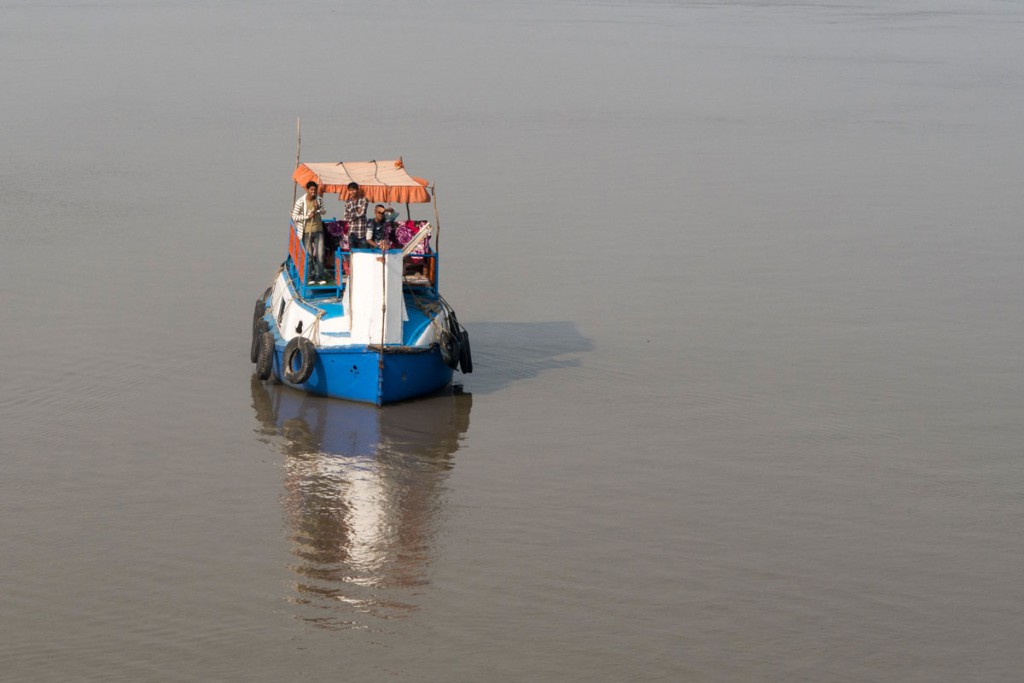
This was one of the reasons we’d decided against a classic tour of the Sundarbans, where you sail through the forest for three days, although it’s touted under the sensationalist slogan of ‘Tiger Safari’.
The Sundarbans are a densely forested, hard-to-access ecosystem consisting of hundreds of waterways, as the three mighty rivers – the Ganges, Brahmaputra and Meghna – meet here in the delta.
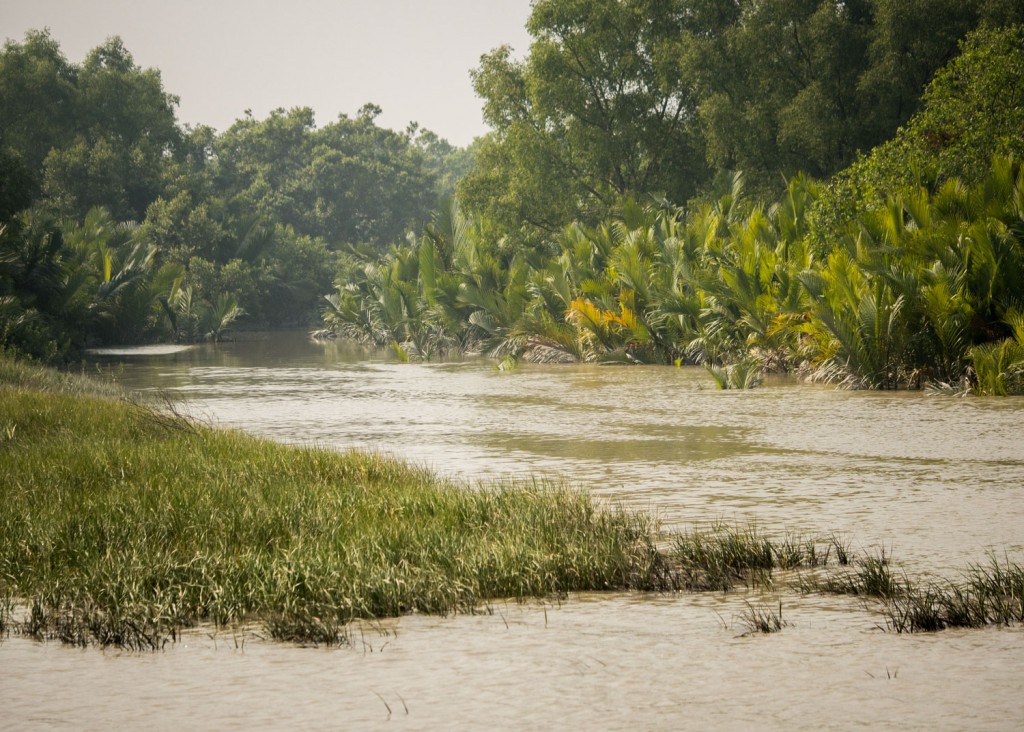
The mangrove forests consist of trees and bushes that have adapted to the salty conditions of the coastline and brackish water. It’s actually a rather inhospitable place – but surprisingly beautiful.
The jungle is so thick that we can’t see much of the interior from the boat, but this makes us all the more curious. We come across lots of birds, apes, river dolphins and even crocodiles.
But will we also see a tiger?
In Bangladesh there are no permanent villages in the forests. When people come here to work, they always live on their boats, whether for two days or several weeks. Tigers are less likely to attack people on boats.
On our journey through the forest, we meet many such workers, most of whom are fishermen.
Previously, otter fishing was very widespread here. Catching fish with otters is a traditional method whereby two otters on leashes drive the fish into the fisherman’s net. The fish are collected from the net by hand, and kept alive in the belly of the boat until they’re handed over to traders and transported to the markets.
In the Sundarbans and the two neighbouring districts of Khulna and Narail, otter fishing is still practised today. There are perhaps a dozen families that have preserved this tradition, making most of their money by charging horrendous prices for ‘fishing shows’ aimed at tourists and reporters. It seems to me to be the most lucrative profession in Bangladesh; the fishermen spoke of earning more than 300 euros a week.
In a lot of coverage of the Sundarbans, you see workers wearing masks with painted faces on the back of their heads. They say that tigers always attack from behind, so you trick the mighty predator by making it think that the mask is facing forwards. Do the fishermen we’re passing generally put on masks when they go out into rural areas?
The ranger who’s accompanying us on a brief walk through the forest tells us that in Bangladesh, at least, nobody has worn these masks for years. He doesn’t know why, but he cynically supposes that people are increasingly thinking of themselves as more courageous, and believe they no longer need the masks.
I let the others go ahead a little. I want to hear the forest, and feel alone in the Sundarbans for a few seconds.
Nothing; nothing moves. I stare into the forest, concentrating, as if I had X-ray vision and might be able to see a tiger far in the distance. Then it strikes me that black-and-orange stripes are actually the perfect camouflage here. The colours orange and black are dominant near the forest floor, thanks to the shadows and the decaying leaves.
The ranger isn’t very amused, and explains again how important it is to stay close together. We’re in the empire of the tigers.
Two days ago a tiger crossed his path, claims the ranger, as he was walking along here with some tourists. Well that’s just great, I think. It would be nice if the tiger could turn up now. It’s no use to me two days ago. I feel pure, naïvely dangerous envy – I really, really want to see a tiger. And I’ve not had so much as a glimpse.
The danger posed by tigers remains abstract for me.
I’m not scared, because I can’t really consider an animal I’ve never seen to be a genuine threat.
I recall a conversation we had yesterday with a young Bangladeshi man who survived a tiger attack two years ago. I asked him exactly that: whether they’d been afraid when they went fishing in the Sundarbans. ‘No, the danger from the tigers was never real,’ he replied.
He’d gone fishing in the forest for the day with some colleagues. Suddenly the forest police arrived – they hid on land, watching from the undergrowth as the police confiscated their boat. To fish in the Sundarbans you need a permit, but a couple of days are disproportionately expensive compared to several weeks. It’s apparently impossible to earn back the cost by fishing for just one day. They wanted to save the money.
He was reluctant to talk about it. He removed his T-shirt in silence and showed us the scars on his upper body left by the tiger’s claws, then the scars on his head from its enormous teeth. He described the attack in a few words: ‘I just saw a huge shadow, as something heavy threw me to the floor. I felt an intense pain and lost consciousness.’
It was his two friends that drove the tiger away, saving his life.
He will never go back into the forest, and he’s forbidden his son to do so too.
On the way back we take a leisurely route along the edge of the river, accompanying people after their day’s work. Fish nets are drawn in, dishes washed, and people head home or towards the bazaar to meet friends in the evening. They have to finish their work before darkness falls, because as soon as the sun sets it gets very gloomy in rural Bangladesh. Most houses here don’t have electricity.
The shacks along the river’s edge are temporary; the river is constantly wearing away the banks, and increases in width by about a metre each year. Soon all the people here will leave their dwellings and build new mud huts a few metres further inland. For the occupants, this is an entirely normal way to live. I’m spellbound by the beauty of the scenery, but at the same time I’m aware that it’s due to the underdevelopment of the countryside.
Late in the evening we realise that here even the stars are mirrored in the water.
Three days with a Bangladeshi family.
I wake up. Everything hurts. I feel like I’ve only slept for an hour. The snoring from my four roommates kept me awake despite my lack of sleep. When you’re sharing a very small room – we’re talking ten square metres or so – between five people, there’s a limit to what you can accomplish with earplugs.
The bed feels as if it’s made of stone. I’ve probably got the wooden board and lack of a mattress to thank for that. I’m also desperate for the loo – have been the whole night, in fact, but I’m unwilling to risk it, as there’s no electricity and the nights here are pitch black. The toilet – by which I mean the shed with a hole in the floor where you attend to the call of nature – is outside, and not particularly inviting even in daylight. In the dark you wouldn’t see so many details, of course, but I’m not sure whether that’s really more of a disadvantage.
As I’m on the toilet, I sense that peeing while crouching down is altogether too taxing for me. My thighs hurt, and there’s nothing to hold on to. The stench, the flies and my fear of anything that might suddenly start crawling over me as I hang over the hole, my trousers around my ankles, don’t do anything to facilitate the procedure.
The others are still asleep. I don’t know what time it is. I lie back down on my wooden bench-slash-bed, which actually belongs to a mother and child; they vacated the double bed especially for us. We try to silence our guilty consciences. There’s not much we could have done about it anyway: turning down a gesture of hospitality like that would have been taken as an insult.
These ten square metres constitute the family’s whole house: mud walls covered in corrugated iron and straw, no windows. There’s another single bed in the room. It’s probably where Bobby’s aunt usually sleeps, but it’s currently home to one of his friends. All the family’s belongings are stored under the beds. Dishes, kitchen utensils, blankets and clothes.
They cook outside on the veranda, with a gas flame. There’s a third bed out there, where Bobby and another friend are sleeping. I wonder what happens when there’s a monsoon – doesn’t the mud house just dissolve?
Johannes wakes up.
‘We live in a palace’ are the first words I say to his ‘good morning’.
At home in Berlin we share eighty square metres between two people: three main rooms, a kitchen, bathroom and guest toilet. Electricity, warm running water, heating, plumbing – everything that for us is completely normal and here would be a real luxury.
The blue wooden house is somewhat larger, but accommodates at least fifteen people. There’s no concept here of personal space or the comfort of your own bed. Blankets are laid down on the floor in the evenings, providing space for as many people as need it. I wonder how anybody manages to conceive children, given that no-one has any privacy.
Water they get from their fish farm next door. The children plunge their toothbrushes into the murky water without hesitation. ‘Oh my god, no!’ I want to scream, but I suppress my intuitive reflex. It’s normal here.
Normal – what a relative term that is, though it’s supposed to mean a universal commonality.
Clearly every society and every country has its own customs, its own normality. The way Bobby’s family lives is perfectly normal here.
The only permanent private house in the area belongs to a family friend. He owns numerous fish farms, also breeding crabs and shrimp. The business is doing well. He’s got a two-storey house and a large vegetable and flower garden, with an ornamental pond and lots of coconut trees.
We’re given an extensive tour of the house, with its kitchen, toilet and bathroom. Johannes accompanies the man of the house and I the lady, so that no misunderstandings arise – the furnished bedroom on the upper floor will also be proudly presented. There’s no running water yet, but there are solitary light bulbs hanging from the ceiling on the ground floor.
Fish masala and as much fresh coconut water as we like are provided as a snack.
The family invested all their money into building the house; nothing’s been kept back for tough times, Bobby tells us. You’d never know it to look at them that they starve sometimes, when the farm doesn’t produce enough fish.
We head off towards Khulna, back into the city. Our three days in the countryside are over – somehow it all went very quickly, yet I’ve come back with more intense impressions than almost ever before.
From our comfortable armchairs in the West, we tend to condemn the Bangladeshis for wiping out the tigers in the Sundarbans, without engaging with the reality of the situation for people living here. My encounter with them has shown me once more that every topic has two sides, both of which need to be taken seriously. Only a holistic approach, like the one taken by Wildteam with their ‘Mother Sundarbans’ project, can lead to a satisfactory solution.
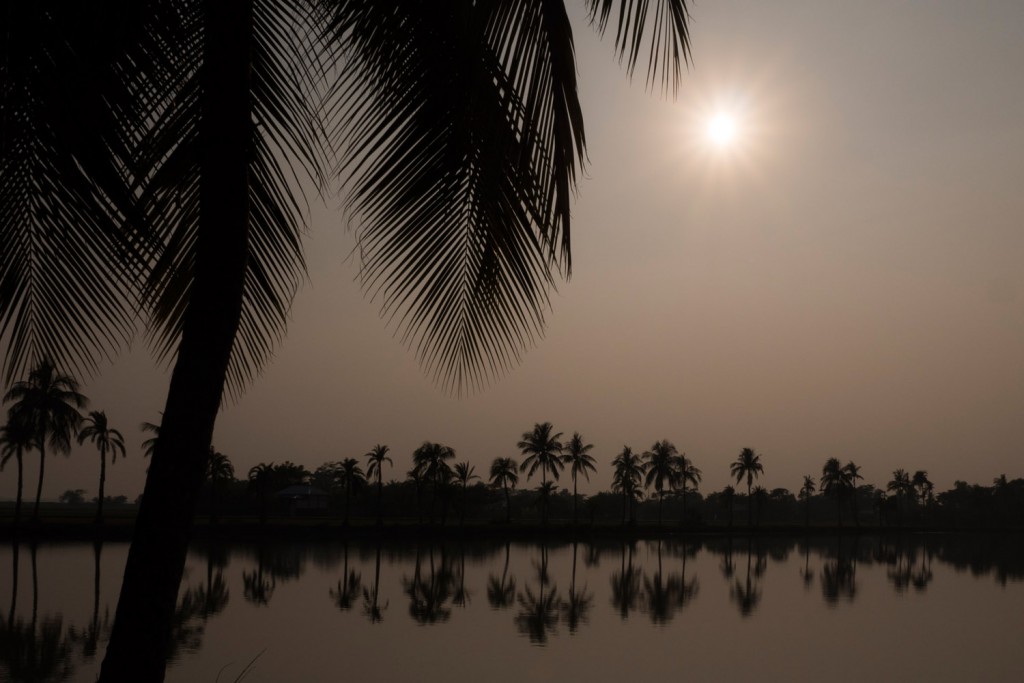
I’m happy. I had an exhausting but wonderful time with Bobby’s family, who even ended up inviting us back for Christmas. I was actually a little drawn to the idea, because here it’s about spending time together, with no lengthy discussions about food, gifts or decorations. Still, we wouldn’t really be able to relax and enjoy it, as we’d be getting in the family’s way over the holidays. I’m quite sure, even though they haven’t let it show, that they’re all looking forward to having their beds back.
Just as I’m looking forward to being back in a hotel, lying on a comfy bed, sitting on a toilet and taking the most wonderful shower of my life.
I’ve never valued hot running water more highly.
* * *
Translation by Caroline Waight
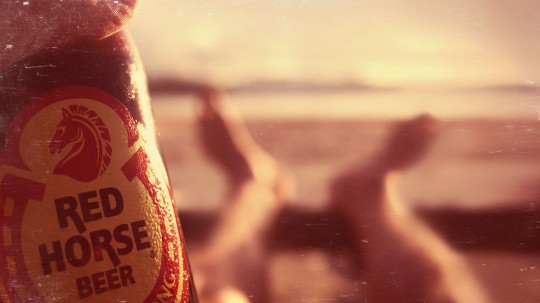
Fresh from a break-up, Marco Buch sets out on an emotional rollercoaster ride in the Philippines, meeting dancing killers and tattooed girls, and experimenting with Tinder.
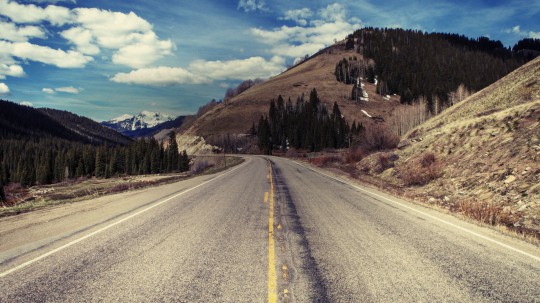
Colorado is famous for its splendid mountains, to which John Denver’s anthem is dedicated. Dirk Rohrbach seeks their unique thrills, biking over some of the highest passes in the Rocky Mountains.
Ruanda Mister Guhonda und die letzten GorillasElfenbeinküste Die GeisterstadtUganda The Long Road to WaterKongo Crossing CongoSouth Africa: Kruger NP The Big FiveSomalia Welcome to Somalia
USA: Florida 100 miles on the tracks of the CalusaUSA Arm, aber frei – als Hobo durch AmerikaBrasilien Rio de JaneiroArgentinien Aconcagua, 6962 MeterPeru Zwischen Himmel und ErdeUSA: Utah WestworldKuba Drüben, in der anderen WeltKaribik TraumschiffMexiko Comeback mit Backpack in MexikoUSA: Alaska Big RiverNicaragua The Magic of the Corn IslandsUSA: Alaska Alone in the WildernessUSA: Colorado Rocky Mountain High
Antarctic Happy Antarctica
Iran Hochzeit im IranChina Urlaub im ÜberwachungsstaatKatar Fata Morgana Allgäu Orient RallyeMongolei Gekritzel im Sand gegen die große EinsamkeitSyrien Willkommen in SyrienUsbekistan Ein Meer aus SandIndonesien Meine Tage als BuleJordanien JungeBurma Nachtzug nach BaganKirgisistan Die Flügel des MenschenBurma Goldene ZeitenRussland Couchsurfing in RussiaThailand Der Pfad der ErleuchtungAfghanistan KabulChina K2Pakistan Hitchhiking Through Pakistan On the Road of LifePhilippinen Me, Love and Other CatastrophesIran Kids of TehranBangladesh Life and Death in the Empire of the TigerIran Couchsurfing in IranBurma Road to MandalayVietnam Lost in Vietnam
Spanien Ungezähmte BergeFrankreich Yoga und SurfenGermany Ein Esel zum PferdestehlenAustria Der Geschmack des WaldesGermany Vier Räder, Küche, BadFinnland Sehnsucht nach SchneeGermany Mehr Pott geht nichtAustria Mach mal langsamFinnland Hoch in den NordenRumänien In RuinenGermany Grenzgänge durch BrandenburgGermany Towards WinterGermany Das blaue ParadiesSchweiz Zur grünen StundeNorwegen The Rest is Silence Germany ZauberlandSpanien Mrs. Müller Drops OutNorwegen Ultimate FreedomSpanien Into the Heart of the PyreneesFinnland Wandering CosmosGermany The Bundesliga village Germany Under The DomePoland Warszawa rzucająca na kolana On the Road of LifeGermany Munich: Oh well, I live here. So?Germany Jena: Next Stop ParadiseGermany Bochum: Steel HeartbeatsTürkei Arrival in Istanbul Italy Dear Dolomites, I'm BackTürkei Floodlights in the ForestCroatia Ambuscade at the BorderGermany The Bavarian OlympicsAustria Across (Goat) CountryLatvia Somewhere up thereGermany The Big GoalGermany My Loveletter to LangeoogGermany The End of a Journey
Auf der Rückseite des GlobusNew Zealand Speed Dating with New Zealand
Welt Six Pairs of Shoes
Germany Ein Esel zum PferdestehlenGermany Vier Räder, Küche, Bad Freiheit auf vier RädernChina Urlaub im ÜberwachungsstaatUSA Arm, aber frei – als Hobo durch AmerikaKuba Drüben, in der anderen Welt Auf der Rückseite des GlobusFinnland Hoch in den NordenSyrien Willkommen in SyrienUsbekistan Ein Meer aus SandElfenbeinküste Die GeisterstadtBurma Goldene ZeitenRussland Couchsurfing in RussiaGermany Das blaue ParadiesSchweiz Zur grünen StundeNicaragua The Magic of the Corn IslandsKongo Crossing CongoNorwegen Ultimate FreedomSpanien Into the Heart of the Pyrenees On the Road of LifePhilippinen Me, Love and Other CatastrophesTürkei Arrival in Istanbul Türkei Floodlights in the ForestCroatia Ambuscade at the BorderAustria Across (Goat) CountryGermany The Big GoalNew Zealand Speed Dating with New ZealandAntarctic Happy AntarcticaBurma Road to MandalayVietnam Lost in Vietnam
Spanien Ungezähmte BergeGrönland Gefangen im EisIran Hochzeit im IranUSA: Florida 100 miles on the tracks of the CalusaBrasilien Rio de JaneiroArgentinien Aconcagua, 6962 MeterPeru Zwischen Himmel und ErdeUSA: Utah Westworld Allgäu Orient RallyeFinnland Sehnsucht nach SchneeRuanda Mister Guhonda und die letzten GorillasMongolei Gekritzel im Sand gegen die große EinsamkeitRumänien In RuinenJordanien JungeUSA: Alaska Big RiverUganda The Long Road to WaterAfghanistan KabulNorwegen The Rest is Silence Germany Under The DomeChina K2USA: Alaska Alone in the WildernessPakistan Hitchhiking Through PakistanIran Kids of TehranUSA: Colorado Rocky Mountain HighBangladesh Life and Death in the Empire of the TigerIran Couchsurfing in IranSomalia Welcome to Somalia
Frankreich Yoga und SurfenAustria Der Geschmack des WaldesKatar Fata MorganaKaribik TraumschiffGermany Mehr Pott geht nichtAustria Mach mal langsamIndonesien Meine Tage als BuleGermany Grenzgänge durch BrandenburgBurma Nachtzug nach BaganKirgisistan Die Flügel des MenschenMexiko Comeback mit Backpack in MexikoGermany Towards WinterThailand Der Pfad der ErleuchtungWelt Six Pairs of ShoesGermany ZauberlandSpanien Mrs. Müller Drops OutFinnland Wandering CosmosGermany The Bundesliga village Poland Warszawa rzucająca na kolanaGermany Munich: Oh well, I live here. So?Germany Jena: Next Stop ParadiseGermany Bochum: Steel HeartbeatsItaly Dear Dolomites, I'm BackGermany The Bavarian OlympicsLatvia Somewhere up thereSouth Africa: Kruger NP The Big FiveGermany My Loveletter to LangeoogGermany The End of a Journey
Readers Mail
Tell us what you think
Tantchen on 27. April 2015
Hallohallo, das war ein sehr, sehr, sehr schöner Bericht über Bangla Desch!!!!!!!!!!! Hat mir sehr gut gefallen, besonders die Eindrücke über die Otterfischerei…. Gut, daß ihr den Tiger nicht gesehen habt, denn dann wäre er ja nicht mehr so geheimnisvoll….
Liebe Grüße
Tantchen
Marianna on 27. April 2015
Hallo!
Ganz herzlichen Dank, freut mich sehr, dass dir der Bericht gefällt.
LG
Marianna
Philipp on 27. April 2015
Ein feiner Artikel. Dem Tantchen kann ich nur zustimmen: gut, dass Ihr den Tiger nicht zu Gesicht oder gar ins Gesicht bekamt. Liebste Grüße! Philipp
Marianna on 29. April 2015
Hallo Philipp,
danke dir! Mhh… vielleicht besser, mögt ihr Recht haben.
LG
Traveling Shapy on 3. Mai 2015
Das nenn ich mal Reiseberichte 2.0 einfach überragend kann man nicht anders sagen. Hat bestimmt einiges an Zeit und Arbeit gekostet das schöne Ding fertig zu stellen, aber hat sich auf jeden Fall rentiert.
Viele Grüße
Matthias
Marianna on 4. Mai 2015
Hallo Matthias,
tausend Dank für dein liebes Feedback! Ja, das kostet einiges an Zeit und Arbeit, aber es macht Spaß, vor allem wenn so nettes wertschätzende Kommentare zurück kommen. Merci!
Weiterhin viel Spaß beim Reisen wünsch ich dir.
LG
Marianna
István Jankovits on 22. Mai 2015
Reading through your lines, I felt the humid hot air and the scent of masala… Beautiful writing, unique interviews, fascinating colors.
More than nice to have visited Sundarbans through your article, felt myself in Dhaka-Sylhet-Khulna-Chittagong-Cox’s Bazaar … today … after more than 30 years
Every best wish,
istvan
Marianna on 16. Juni 2015
Hi István,
thank you very much for your great feedback!
Ewa on 7. Juni 2015
Hallo liebe Marianna,
wow…ich bin gerade so beeindruckt von deinem Reisebericht! Der Wahnsinn! Großartig! Bewegend!
Ich habe gerade Lust auch so etwas zu machen, jetzt und sofort! Am liebsten würde ich einfach nur raus und all die Eindrücke auch erleben wollen. Ich liebe solche Berichte zu lesen und ich liebe es zu reisen!
Ich würde bei Gelegenheit gerne mehr von dir und deinem Leben erfahren!
Viele liebe Grüße :-)
Marianna on 16. Juni 2015
Hallo Ewa,
tausend Dank für deinen herzlichen Kommentar, ich freu mich riesig drüber. Und was ich nur raten kann: LOS! :)
LG Marianna
Ulla on 13. August 2015
Äusserst informativ, unglaublich spannend, differenziert geschildert, Marianna! Illustriert durch wunderbare Fotos, teilweise wie Gemälde!!! Echt bereichernd!!!
Darüber, dass die Tiger-Begegnung sich nicht erfüllt hat bin ich noch im Nachhinein sehr erleichtert – du mutige Frau…!
Und – ja – wir wohnen in Palästen!!!!
Marianna on 31. August 2015
Danke dir liebe Ulla!
Marco on 18. Januar 2016
Liebe Marianna,
Deine Reisebericht ist ein Kunstwerk!
Bisher dachte ich Bangladesch, naja später mal. Aber jetzt rückt dieses Land und die Geheimnisse ganz weit nach vorne auf meine Reise-Wunsch-Liste!
Wirklich gut geschrieben und perfekt inszeniert! Ich freue mich auf mehr!
Liebe Grüße Marco
Marianna on 20. Januar 2016
Hallo Marco!
Ganz lieben Dank für dein tolles Feedback. Freut mich sehr zu lesen und viel Spaß auf der deiner baldigen Bangladeschreise!
LG
Marianna
Max von Rötel on 24. April 2017
Der Bericht, wie auch die Art der Darstellung mit den eingefügten Videos, hat mir besonders gefallen. Man hat nicht den Eindruck, dass ihr wie ein touristischer Obstkorb weitergereicht wurdet.
Samir on 6. April 2020
The complete article provides us unbiased view in the lives, of sundarban people – They are really dependent on the sundarban forest for their livelihood, and indeed when a tiger attacks and robs them of only one cow they have to support their entire family and livelihood,, there lives take big toll..
Džangir on 11. September 2020
I hope I’ll have chance to visit this great country once
PARV UPADHYAYA on 16. Februar 2021
Hello, I am PARV UPADHYAYA. I am an emerging travel blogger. Recently I created my own website and I want to promote it. So I am Sharing my website. Please share with Everyone. Thank You!
Gustavo Woltmann on 30. März 2021
I am always fascinated by the Sundarbans, especially the Royal Bengal Tiger. Thanks for sharing so much useful information about the place.